Exclusive! Production designer Raveendar: Watching Prabhas, Pooja Hegde in 1970s Europe in Radhe Shyam will be a visual wonder
The technician who worked on several pathbreaking films in Telugu cinema, including Aithe, Anukokunda Oka Roju, Magadheera, Eega, discusses his humble beginnings and about bringing an Indian connect to the European backdrop in Radhe Shyam
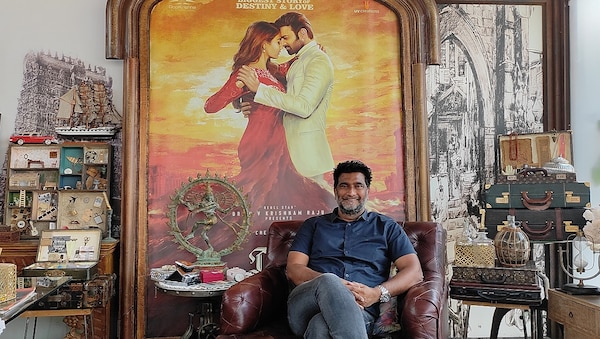
Last Updated: 07.48 AM, Mar 10, 2022
One of the most popular production designers in Telugu cinema, Raveendar, whose career took off with Aithe in 2003, attributes his longevity in the industry to his practical approach to work and a firm understanding of ground realities. He is a stickler for planning, believes in the method behind the madness, is straightforward with his talk and delivers what he promises. Just like the ceiling in his Hyderabad office reads, ‘think big’, he is living his dream now.
Having been a part of some of the finest Telugu films produced over the last two decades, Chatrapathi, Anukokunda Oka Roju, Magadheera, Eega, Maryada Ramanna, he says it's time for 'full meals' in unleashing his skill set entirely for the Prabhas, Pooja Hegde starrer Radhe Shyam that hits theatres this weekend. In a conversation with OTTplay.com, he talks about his fulfilling tryst with cinema, building 'brand Raveendar' and offers a sneak-peek into the 1970s Europe of Radhe Shyam.
Early artistic influences
My mother and father did have a taste for art. My pinni (mother's sister) Santha Kumari was a very good artiste and on one Sankranthi festival day, she drew a beautiful, multi-coloured 10-feet-long gollabhama muggu (flour design) in front of our house. It was so good that people back in my village turned up in huge numbers just to see the muggu for over 20 days. Even those riding their vehicles made sure they didn't come in the way of the rangoli design. My cousin, Manohar, who stayed in Sriharikota, was also a gifted painter.
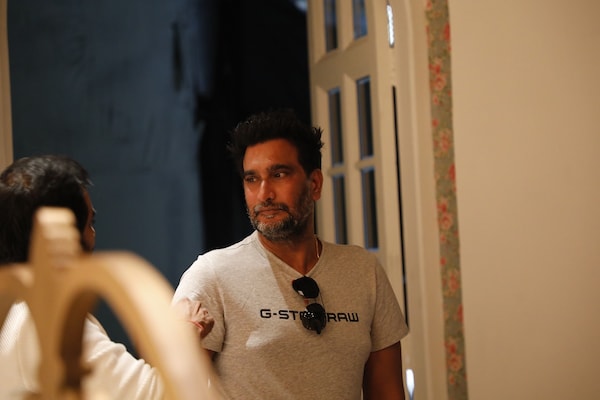
His artistic growth, the U-Turn and realising his dream
I was a good artist right in childhood and won a lot of prizes in various competitions. The one I can distinctly remember is the state, national awards I won during competitions organised in memory of Rajiv Gandhi. When the government had called for art around the theme 'Save Oil, Save India', I bagged top honours. Even when the Vandemataram album had released and created a sensation, I was privileged enough to design the cover of the first cassette. In my mind, I wanted to be someone on the lines of a Raja Ravi Varma and came to Hyderabad.
We belonged to a well-settled family but I was always encouraged to be independent. I didn't want to depend on my parents even during my seventh grade and made pocket money designing banners. I was keen on studying medicine, got a four-digit rank too but I landed a BDS (Dental) seat. I wasn't quite interested in it. My cousin suggested that I try my hand at an arts course and study at JNFAU. I managed to get a seat and enrolled in the painting department. When I realised painting as a discipline was very expensive, I shifted to applied arts. I did my MA in IIT, Delhi later and earned a job in BPL, Bangalore.
An accidental foray into films
In the meanwhile, a miracle happened and I happened to meet Gunnam Gangaraju. It's only because of him that I've come this far in the industry. He did a few software jobs and I also worked with his company, Just Yellow, associating with their projects, including the popular sitcom Amrutham. They were about to launch Aithe and were looking for an art director. There was little budget. When my name came up, they opined that I was too straightforward to work in the film industry.
Most of them were looking to kickstart their career with Aithe - Chandrasekhar Yeleti as a director, Kalyani Malik as a composer and K Senthil Kumar as the cinematographer. Kalyani insisted that I be part of the project and suddenly the idea of me being the art director became a serious discussion and I was finalised for Aithe. Chandu (Yeleti) was surprised when I asked him to give me a narration. I made a list of props needed for the film and everyone was tense when I was to get it proof checked by the bossman Gunnam Gangaraju. He gave it a 100/100 and that's how my career took off. I got introduced to SS Rajamouli later, worked with him for Simhadri, Chatrapathi and I didn't have to look back later.
Establishing a career in films without a plan
My motto in my career or life generally is - to do whatever I want but not hurt anyone in the process. Whatever little I do, whether pathbreaking or not, I aspire to be thorough with it. I am very correct with my work and this is what helped me survive in the industry this long. Three aspects are crucial for a career in films - money, time, quality. It's a triangle and it's challenging to balance all three. The key to success is attaining control over two among them and being smart in bringing the third in your grasp. People may say 'Raveendar won't compromise and is adamant' but I don't worry about such things and divide my time between work and family.
The realisation that he was truly made for the job
I drew a line for myself early in my career - like how I wouldn't use thermocol for a scene or not leave anything to chance the way weapons are designed for battle scenes. I didn't want to take the audience for granted and never compromised on the look, feel of the props. With Chatrapathi, Magadheera, I proved my worth. Creating that slum set in Chatrapathi was a great experience.
Back then, the team was asking composer MM Keeravani to drop by the sets one day but he said he was busy and preferred to see the set on the screen directly during the re-recording. They reminded him that he had lunch twice on the sets. Till then, he didn't even realise he was in the middle of a set. I could convince someone of his experience that the set was a real location. What's a bigger victory than that? That's the level of detailing I bring to my work.
Creating a makebelieve world in films
There's a thin line between making a prop look believable and being realistic. For instance, there was a chandelier on the sets of Radhe Shyam that Prabhas liked immensely and asked for it. The wife of Prashanth Neel, director of Salaar, happened to visit the sets and wanted them for her house. I told them it wasn't even real. We had painted shiny colours over it and used plastic leaves, creating a striking impact and there was an awe factor when we were shooting for the sequence. Filmmaking is all about convincing audiences that whatever is happening during the moment is for real.
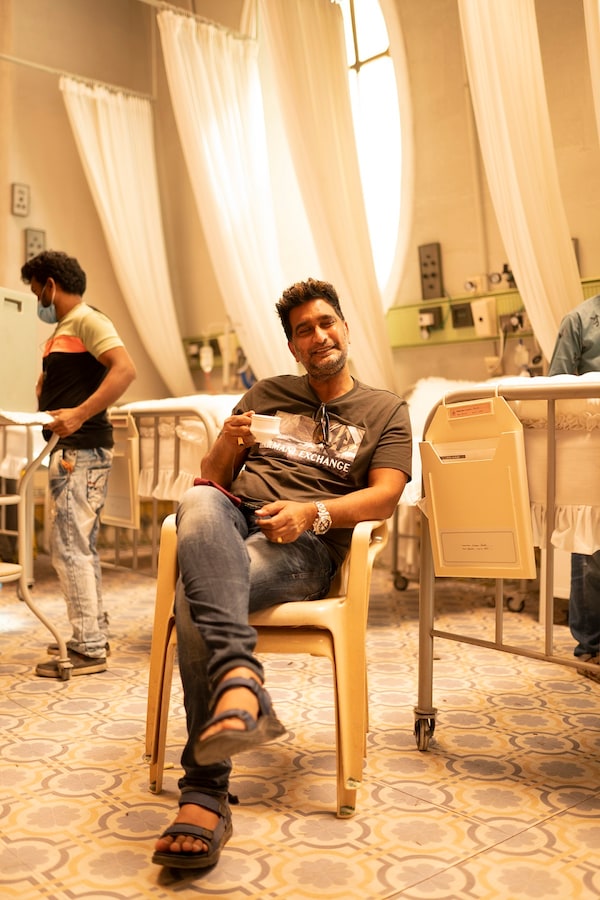
His approach to work and building brand 'Raveendar'
Right from the beginning, I didn't want to work like a regular film person. By that statement, I mean I didn't want my world to revolve around films 24*7, eat whatever I get and have no lifestyle of sorts. I wanted to be very methodical about my work and be clear with my priorities. I always believe in recce, making notes and only then, will things fall in place. When everyone says that the quality of international cinema is on another level, I always ask them why can't we create such an atmosphere here?
When I came on board for Radhe Shyam, I was clear that I have to be informed about things well in advance. There won't be any last-minute tension or hassle on the set. Props are not something we can buy from a fancy store and be placed on a set. Every element in the frame has a character. One can compromise at work and get away during the making, but my career will be dependent on what audiences see in the final result.
What does the pan Indian cinema trend mean to the technicians?
Pan Indian cinema has made us realise the worth we have and look within. You won't believe that, for Radhe Shyam, I didn't hire a single person from Italy and I didn't even buy a single pencil from that country. Everything is customised as per the needs of the film. Right from wallpaper to carpets to the fabric to the flooring, everything in the film was created by our team. We need to keep the budget in mind and still create a similar impact.
The identity of Vikramaditya and Prerana in Radhe Shyam and bringing it alive through his ambience
Vikramaditya is a palmist, he is a league apart in the way he looks, as if he's a fine blend of grandeur, artistry and classic appeal. Prerana, true to her name, has inspiring qualities, an innocence about her. There's more to her beyond her beauty. She's a medico, raised in a good family and no one better than Pooja Hegde could've played the part with an angelic charm. It's also hard to imagine anyone else beyond Prabhas in the shoes of Vikramaditya. Both the actors have justified the characters aptly. Viewers are lucky to watch them in the backdrop of Europe in the 1970s - it's going to be a visual wonder.
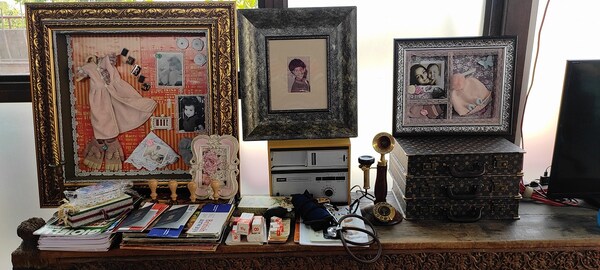
You may witness Vikramaditya in all his grandeur in the halls of his home, but for his bedroom, it's his personal space and we had to give it a different texture. With a loveable girl like Prerana, we used a lot of plants, greens, fabric and other aspects that'll bring about the identity of the character. We did something similar for each character.
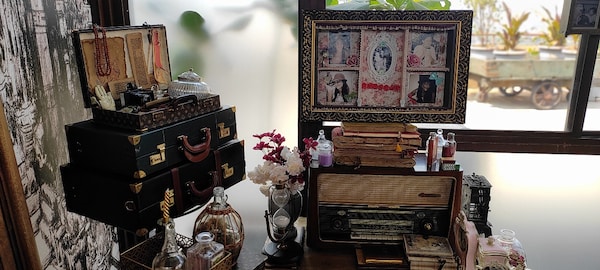
Before I was part of Radhe Shyam, the project was to be shot in India and later we changed it to the backdrop of Italy. When you want to make an entire film set in the 1970s, how far can we go with the detailing? How can the visual of every house be imagined differently? For one house, we had to visualise that its lighting source would only be chandeliers, another location would be shown through its windows. Ultimately, every house is similar to one another but we couldn't afford to showcase different locations in the same way. That's how our props varied from location to location. We decided to use leather for one, fabric for another, printed fabric for the other and so on.
Bringing an Indian connect to 1970s Europe
Vikramaditya stays in Rome and they have reached here after coming from Varanasi. If they're coming to Rome in the 1970s, perhaps the building was built in the 1930s or early 20th century. When they come from Varanasi to Rome, they bring a part of their identity to a different country. Bhagyashree, who plays Prabhas' on-screen mother, is a classical dancer who teaches a set of students. So, there's a natural Indianness in her world, there's a sitar and a lot of other little elements that connect the character to her roots. Whenever we're establishing something personal about every character in the film, the references to Indian culture are quite evident. However, for the hospital set in Italy, you can't try to do that because it's a location very specific to that country.
On the seamless coordination with cinematographer Manoj Paramahamsa
The equation between me and Manoj is such that we don't need to discuss anything and are in perfect sync with one another. Whenever I wrap up everything that's required for a scene, he just comes and tells me, 'You've done your part and it's for me to take over.' After that, our conversation is basically about how to weave in all the details into the story and highlight what's necessary - that's when we talk of colour palette, use of filters, lighting patterns. It's a smooth discussion that has always benefited the movie big time.
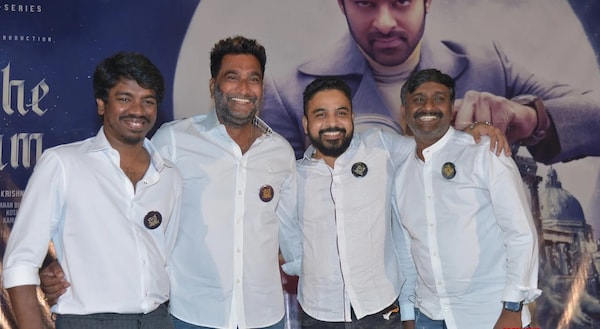
Sustaining the focus on Radhe Shyam for three-four years
I was asked something similar by a costume designer on the set. He questioned, "Will you ever have a saturation point? How do you retain the same enthusiasm in a film after so many years in the industry and work with the same commitment as if it were your debut?" He smiled when I said that I didn't have a choice and it was just the way I went about my job. For Radhe Shyam, from the very first shot to the final patchwork, we retained the same quality in terms of our work. Manoj Paramahamsa was joking that I always push him harder, from the first day to the last day. The credit goes to the producers because they never compromised in their vision and truly believed in me.
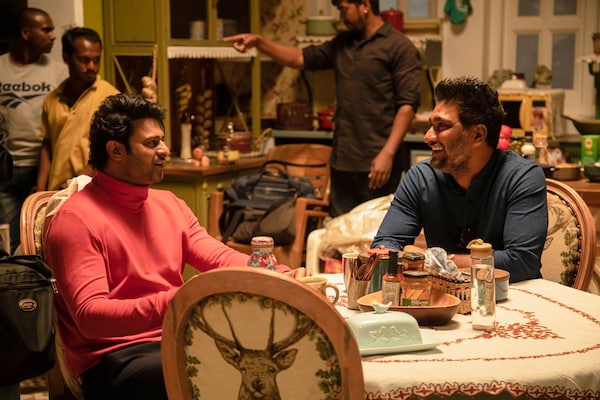
Why is the work of an art director discussed only when it's a period/fantasy film or when it involves huge sets? Why isn't it a topic of discussion when it comes to regular films where they blend into the atmosphere?
Interestingly, most of the films I'm associated with, involves a lot of work in the art department. Many times, audiences can't distinguish between a set and a real location in my films and that way, I need to be disappointed with every film (laughs) about recognition. The media had approached me many times to discuss the work that goes behind it but I think I didn't take the step forward to talk about my efforts in detail. There's truth to the fact that we talk about production design only for films with huge sets and that are made at a lavish scale. I still feel that our audiences are evolving by the day and are gradually recognising the importance of production design in other genre of films too.
The many changes in Telugu cinema over the years
There's been a sea change in the way we look at cinema in these decades but I'll be honest to say that the art department is in need of a rehaul. We have a lot of technology today and there are so many options when it comes to props but we still prefer to go by the conventional methods and run the show. Once we break that pattern, we can get quicker with our work and do a better job.

 Premium
Premium